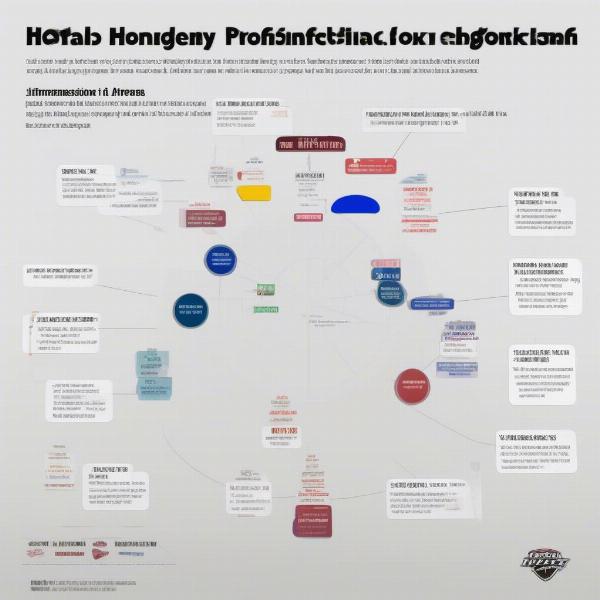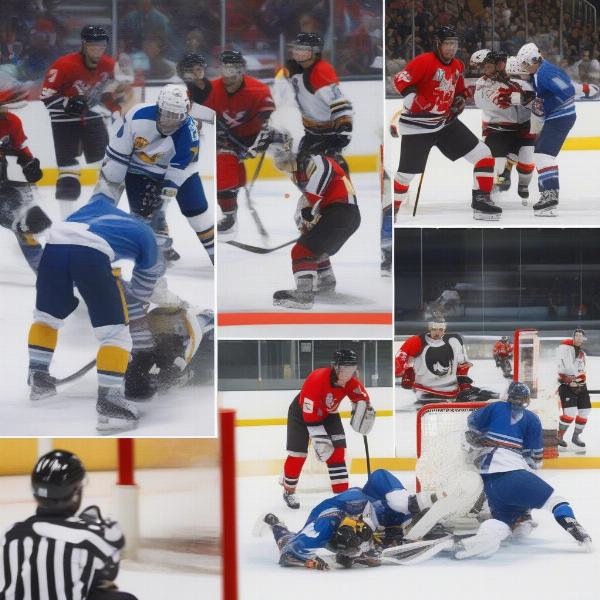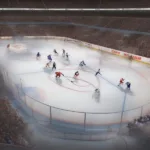A professional hockey game typically lasts around 3 hours, although the official game time is 60 minutes of playing time spread across three 20-minute periods. This timeframe doesn’t include intermissions, stoppages for penalties, icing, offsides, and other game interruptions. So, while the clock says 60 minutes, the actual time spent at the arena is significantly longer.
After the first period, there’s a 15-18 minute intermission. Another 15-18 minutes follows the second period. This time allows for ice resurfacing, team discussions, and fan breaks. If the game is tied after regulation, a 5-minute overtime period (or longer, depending on the league and situation) follows the second intermission. In some leagues, if the game remains tied after overtime, a shootout decides the winner. These scenarios can add considerable time to the overall game length. You should consider these factors when planning to watch a game, whether in person or on TV. After an exciting match, you might also be interested in learning how many quarters in soccer game.
Breaking Down the Length of a Hockey Game
Let’s dissect the different components contributing to the overall duration of a professional hockey game.
Regulation Time
The core of a professional hockey game consists of three 20-minute periods, totaling 60 minutes of regulation play. Each period is a fast-paced battle, with players skating end-to-end and engaging in intense physical contact. The clock stops frequently for various reasons, such as penalties, injuries, offsides, icing, and face-offs.
Intermissions
Between each period, there’s a scheduled intermission. These breaks typically last 15-18 minutes, providing time to resurface the ice and allowing teams to regroup in their locker rooms. Fans can use this time to grab refreshments or discuss the exciting moments of the game so far. These breaks, while important for game operations, do contribute to the total length of the hockey experience. Understanding how these breaks factor into the overall time is key to planning your game day experience. Sometimes, the anticipation during these breaks can feel as thrilling as the game itself!
Overtime
If the score is tied at the end of regulation time, the game goes into overtime. The overtime format varies between leagues. In the NHL, regular season overtime consists of a single 5-minute, 3-on-3 sudden-death period. The first team to score wins the game. In the playoffs, overtime periods are 20 minutes long and continue until a team scores. Similar to knowing what was the score of the florida game, understanding overtime rules is essential for following the game.
Shootouts
In some leagues, if the game remains tied after overtime, a shootout determines the winner. Each team selects three players to take penalty shots. The team with the most goals after three rounds wins. If the shootout is tied after three rounds, it continues in sudden-death format until one team scores and the other misses.
 Professional Hockey Game Time Breakdown
Professional Hockey Game Time Breakdown
Factors Affecting Game Length
Several factors can influence the overall duration of a hockey game. These include the number of penalties, injuries, coach’s challenges, and television timeouts. Games with many penalties and stoppages will naturally take longer than games with fewer interruptions. If you’re curious about the outcomes of other sporting events, you might want to check out what was the score on dallas game.
Penalties and Stoppages
Frequent penalties, offsides, icing calls, and other game stoppages can significantly extend the duration of a hockey game. These pauses disrupt the flow of the game and require officials to reset the play, often adding minutes to the overall time.
Injuries
Player injuries can cause delays as medical personnel attend to the injured player. Depending on the severity of the injury, the game can be paused for several minutes, impacting the total game length.
 Factors Affecting Hockey Game Length
Factors Affecting Hockey Game Length
How to Plan Your Hockey Game Experience
Knowing the potential length of a hockey game can help you plan your experience accordingly. Factor in travel time to and from the arena, parking, security checks, and potential concessions lines.
Attending a Game in Person
If you’re attending a game in person, arrive early to avoid long lines and secure your seat. Also, consider the time needed for travel, parking, and getting through security.
Watching a Game on TV
When watching a game on television, remember that the broadcast may include pre-game and post-game shows, commercials, and analysis. These elements can extend the viewing time beyond the actual game duration.
Conclusion
While the official game time for professional hockey is 60 minutes, the actual time spent watching a game is considerably longer due to intermissions, stoppages, and potential overtime or shootouts. Understanding these factors will help you plan your hockey game experience more effectively.
FAQ
-
What is the average length of a professional hockey game? Approximately 3 hours.
-
How long is each period in a hockey game? 20 minutes.
-
How long are the intermissions in a hockey game? Typically 15-18 minutes.
-
How long is overtime in a hockey game? 5 minutes in the regular season (NHL) and 20 minutes in the playoffs (NHL) until a goal is scored.
-
What happens if the game is still tied after overtime? In some leagues, a shootout determines the winner.
-
What factors can affect the length of a hockey game? Penalties, injuries, coach’s challenges, and TV timeouts.
-
Should I arrive early to a hockey game? Yes, arriving early allows you to avoid lines, find your seat, and enjoy the pre-game atmosphere.

